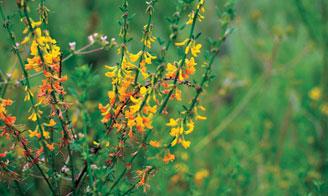We've updated our Privacy Policy
TCA is committed to protecting your privacy and keeping you informed. Click here to read our Privacy Policy (PDF) and learn how your information is collected, used, stored, shared and protected.
73 FULL CLOSURE

Northbound and Southbound 73 Toll Road Between 133/Laguna Canyon Road and Newport Coast Drive Nighttime Full Closure Tuesday, Dec. 5, 10 p.m. to 4 a.m. Wednesday, Dec. 6.
Southern California Edison (SCE) will be conducting work along the 73 Toll Road requiring a nighttime full closure of both northbound and southbound roadways. The work is required to remove and relocate power lines near the Catalina View Toll Point. Detours will be in place to assist drivers.
Click here to learn more about the closure.
Current Initiatives

Notice of Exemption for Repair of Fire Damage to Toll Plaza Buildings
Description of Project:
The F/ETCA will repair the buildings and landscape at Tomato Springs and Orange Grove toll plaza areas, and a median staircase between the Orange Grove toll plazas damaged by the Silverado Fire (October 2020).
Description of NOE:
The Project is exempt under Section 15301 because there is no possibility that the Project will have a significant effect on the environment. The Project consists of repairing the buildings and landscape at Tomato Springs and Orange Grove toll plazas, and a median staircase between the Orange Grove toll plazas that were damaged in the 2020 Silverado Fire on State Route 133 and 241 and will not involve any capacity enhancement. The proposed Project falls within the definitions provided for Class 1 exemption pursuant to Section 15301(d) of the CEQA Guidelines relating to the restoration or rehabilitation of damaged structures to meet current standards of public health and safety.
Notice of Exemption for Repair of Fire Damage to Toll Plaza Buildings (PDF)
Notice of Exemption for the Aliso Creek Attenuator Replacement
The Project proposes to install an additional barrier and replace a crash cushion, impacted during a single vehicle collision, with a Quadguard M10-type crash cushion at the north end of the abandoned toll plaza median at the Aliso Creek entrance ramp on State Route 73. The purpose of the Project is to enhance highway safety by reducing the potential and severity of run-off-road accidents.
Notice of Exemption for the Aliso Creek Attenuator Replacement (PDF)
Notice of Exemption for the Fire-Damaged Signs Replacement
Notice of Exemption - Fire-Damaged Signs Replacement (PDF)
Live Oak Plaza Conservation Area Final Grazing Feasibility Study
Saddle Club Preservation Property Site Use Plan implementation Project
- Final MND (PDF)
- Final MMRP (PDF)
- Notice of Public Review and Intent to Adopt a Mitigated Negative Declaration (PDF)
- Draft Initial Study and Mitigated Negative Declaration (PDF)
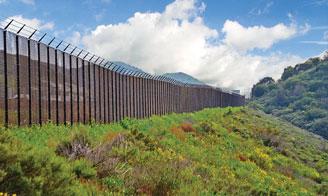
SR 241 Wildlife Protective Fence
One of TCA’s major environmental initiatives was the completion of the Wildlife Protection Fence along State Route 241 and the ongoing monitoring of the fence’s effectiveness and the associated bridge undercrossings and large culverts efficacy. These findings will help TCA and other transportation agencies design and build future projects. The 10- to 12-foot-high fence was constructed to protect mountain lions, muledeer, coyotes and bobcats living in the Santa Ana Mountains from passing cars. In addition to shielding them from the road, the new fence, which spans both sides of a six-mile stretch of SR 241, also funnels them to existing wildlife bridges and culvert undercrossings that allow them safe passage to open spaces on either side of the road. The project was the result of a joint study with University of California, Davis into the movement and health of the area’s wildlife, including GPS tracking of mountain lions, and collaboration with the California Department of Transportation (Caltrans) and the U.S. Fish and Wildlife Service.
Want to learn more? View the poster (PDF) we created showcasing the project to more than 500 transportation professionals and researchers at the International Conference on Ecology and Transportation in September 2015. A similar poster was presented at the Infra Eco Network Europe (IENE) International Conference on Ecology and Transportation in September 2016.
KABC Reporter Rob Hayes, interviews TCA’s Chief Environmental Planning Officer to discuss the Agencies’ wildlife safety fence along the 241 Toll Road.
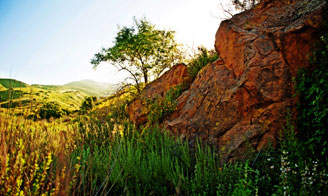
Live Oak Plaza
TCA continues to manage Live Oak Plaza, a 23.2-acre site that forms a wildlife connection to the Cleveland National Forest. Its oak woodlands, riparian and coastal sage scrub provide habitat for the California gnatcatcher and Riverside fairy shrimp.
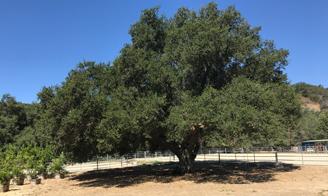
Saddle Club in Trabuco Canyon
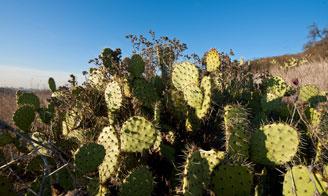
Strawberry Farms Mitigation Site
